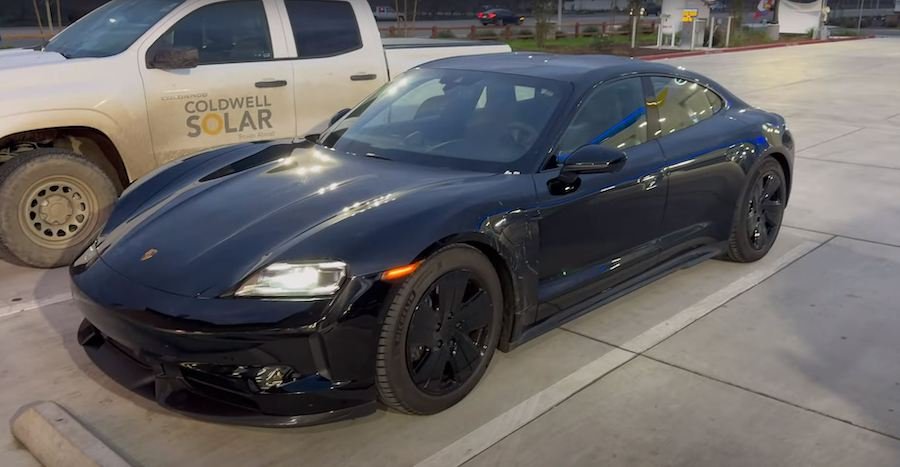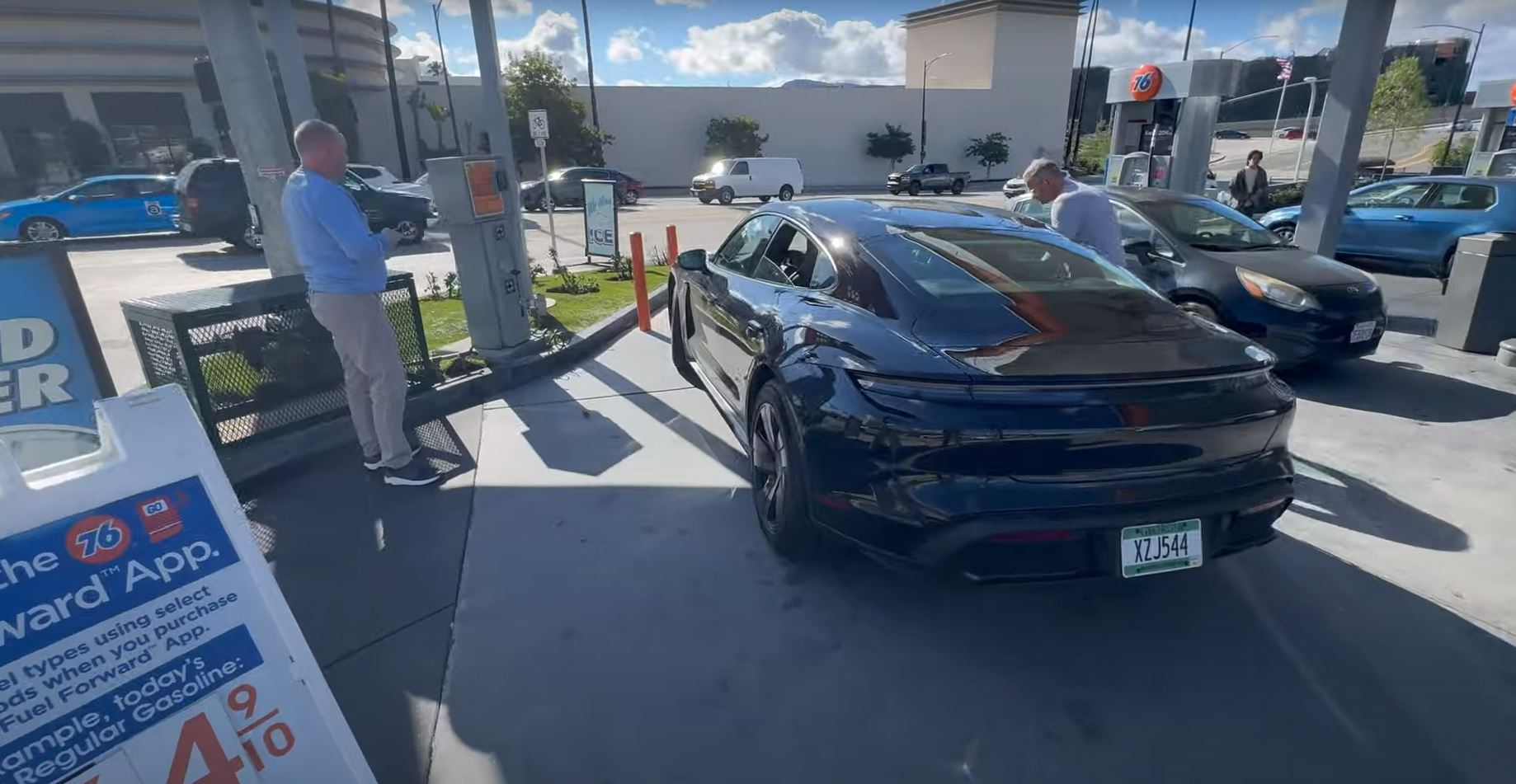2025 Porsche Taycan Facelift Could Make Range Anxiety a Thing of the Past

Although the Germans are known for being fond of precise measurements, we can't fully trust an automaker. After all, it's in their best interest to package everything nicely and show us only the best there is. That's especially true when what they're selling costs well over $90,000. This sedan, however, might just be the upgrade you won't want to miss. Here's why.
The current-generation Taycan has a starting cost of $90,900 and can be equipped with two differently-sized high-voltage batteries: 79.2 kWh and 93.4 kWh. The former is good for about 208 miles (335 kilometers) on a single charge, while the latter (named Performance Plus) adds around 74 miles (119 kilometers) of extra zero-emission go.
The Stuttgart-based automaker indicates that this strategy will continue. The facelift won't be available only with the larger energy storage unit, which, honestly, would have made a lot of sense and maybe could have even streamlined production.
But if you're a dedicated EV fan or connoisseur, you might want to start telling us about Lucid's Air Grand Touring in the comment box and how it's the fastest-charging EV out there. You wouldn't be wrong. That sedan can stack electrons like there's no tomorrow. However, it can't keep that high charging speed for longer periods.
Remember that fast charging is like trying to fill a stadium. Every electron tries to find its place as quickly as possible. But as more seats are occupied, it gets harder and harder for these particles to find their place.
That's why it's not recommended to completely replenish your EV's energy storage unit at a DC fast charger. Wait until 80% is reached, and continue with your journey. It's better to hop from stall to stall than to wait for a full charge in one place. It'll most likely save you precious time.
Growing pains
When writing, the public EV charging infrastructure is insufficient. There just aren't enough stalls to support an increasing number of battery-electric vehicles. Besides that, many chargers often do not work. That leads to queues and frustrated drivers.
It's also what happened during this real-world range test that took place on a sunny day with 60-degree Fahrenheit (16-degree Celsius) weather. Remember – outside conditions will impact your EV's performance because high-voltage batteries aren't immune to the cold (or heat).
The rear-wheel-drive 2025 Porsche Taycan, with over 19,000 miles on the odometer, visited an Electrify America location but couldn't find a spot. There was a line of six EVs waiting to fast charge.
The car was eventually hooked to an EVgo dispenser, but even there, not all stalls worked properly. The team behind the range test had to switch two times before getting the electron flow going. That's the reality of public charging infrastructure in many parts of the US.
The Taycan (without a panoramic roof) was put into Range Mode, on the lowest suspension setting, and the Porsche Trip Planner was disabled to avoid battery preconditioning that could have consumed more electricity. Normally, this feature allows the car to charge faster once the owner is on their way to a DC pedestal.
The A/C system was also set to run at 71 degrees Fahrenheit (21.5 degrees Celsius), on ECO mode, and with the ventilation on auto. The ventilated seats weren't activated for this range test.
Go for it
At 100% state of charge (SoC), the indicated maximum range was 335 miles (539 kilometers). That was already better than what the current-gen Taycan can do on a full battery.
The test started at an average highway speed of 55 mph (89 kph) with four people sitting inside, but it quickly dropped to 52 mph (84 kph).
After 132 miles traveled at a speed of 51 mph, the Taycan reached 75% SoC and displayed an efficiency of 5.1 miles per kWh or 19.6 kWh per 100 miles.
With half of the battery charge level gone and the same average speed, the all-electric sedan covered a bit over 254 miles at an efficiency of 5 miles per kWh or 19.8 kWh per 100 miles.
The test continued even though it started raining and the outside temperature dropped.
At 25% SoC, the Taycan covered over 358 miles at an efficiency of 4.8 mi per kWh or 20.6 kWh per 100 mi. Approximately 94 miles of range left was indicated on the dashboard.
The team drove nine hours and 20 minutes at an average speed of 50 mph. It covered a bit over 450 miles before reaching the 5% SoC. The computer showed an electricity consumption of 4.8 mi per kWh or 20.7 kWh per 100 miles.
Keep it running!
But they didn't stop there. The EV covered an extra 15 miles before starting to throw all kinds of warnings at the driver. Thus, the facelifted Taycan drove 465 miles (749 kilometers) before depleting its high-voltage battery. That's quite the achievement, even though this was more about hypermiling than doing 80 mph on the highway and having everything turned on.
The result is even more impressive when you remember that this unit wasn't a babied Taycan. It had over 19,300 miles on the clock, which shows that degradation isn't going to be much of a worry.
Porsche did not disclose the battery's capacity, but it could be similar to the 100-kWh one that is going into the new Macan EV. The outcome of this range test certainly points in that direction.
We know that buying a spanking-new Taycan isn't feasible for everyone. But if you really want to own one, you might be happy to learn that the used market treats it no differently than it does with its half-sibling, the Audi e-tron GT. You could buy one for almost half of what it was originally worth.
The only problem is that the new one will come with major improvements. For an EV, the more miles it can squeeze out of its high-voltage battery when the weather is nice, the better. When temperatures go haywire, you won't worry about losing 40% of the maximum range possible. You'll still be able to commute peacefully without worrying about recharging and wasting time at a high-power dispenser.
All in all, the new Taycan might very soon prove that Porsche is not only transferring the driving dynamics it is famous for but also delivering EVs that are both impressively quick and efficient. Couple that with impeccable build quality and loads of tech, and what you have here is a winner. Tesla, it might be time to hand over the crown.

Related News
